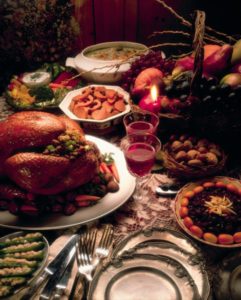
Credit: classroom.synonym.com
Lee Staples, a spiritual leader for the Mille Lacs Indian Reservation in Central Minnesota, says that one must understand Ojibwe beliefs about life in order to understand Ojibwe beliefs about death. “We have within us Anishinaabe spirit, and we just occupy this physical body during that lifetime,” he says. “There is…a reason for us existing on this earth, a reason that the creator put us down…I always think it must be wonderful to know when you go down the path, that you accomplished what Manidoo (creator) wanted you to do on this earth.”
Staples performs traditional burials for the Ojibwe at both the Mille Lacs and Fond du Lac Indian Reservations. His job is to send the spirits to another world and protect those who remain behind. According to traditional Ojibwe beliefs, after the body dies, the individual’s spirit spends four days walking westward to the place where the soul dwells after death. Dan Jones, Ojibwe language instructor at Fond du Lac Tribal and Community College, speaks of the spirit this way: “He doesn’t know it, but if he gets lonely, he may take someone with him.”

Credit: rightojibwe.blogspot.com
Small children and babies are particularly vulnerable. This is the origin of the Ojibwe practice of smudging charcoal on the foreheads of infants and children before bedtime. They believe that the charcoal protects the children from those wandering spirits. As Jones says, “When the spirit sees the charcoal, [the face] is blurred, and he can’t see who it is.”
Ojibwe Mourning and Burial
When a person dies on the Fond du Lac Reservation, the family lights a fire in their home. Relatives of the dead tend to the fire, keeping it continuously lit until the fifth day after death, when they bury the body. During the first four nights, the family offers food to the spirit. They also offer tobacco, one of the four sacred medicines the Ojibwe traditionally use. (The others are sage, sweet grass and cedar.) They place birch bark matches inside the casket with the body, so that the spirit can use the matches to make fires along its journey to the other world. “The land is called Gaagige Minawaanigozigiwining—the land of everlasting happiness,” says Staples.
On the final night, the relatives hold a feast. During the meal, they offer food to the spirit of the person who died for the last time. At the end of the meal, they smoke a final offering of tobacco or place it in the fire. Then Staples speaks directly to the spirit, laying out the details of the journey the spirit will undertake in its passage to Gaagige Minawaanigozigiwining.

 The Spirit of The Dead According To Ojibwe Beliefs
The Spirit of The Dead According To Ojibwe Beliefs


 “Help Me, Helen”
“Help Me, Helen”
 Recovering Cremation Remains After the Los Angeles Fires
Recovering Cremation Remains After the Los Angeles Fires
 “As Tears Go By” by Marianne Faithfull
“As Tears Go By” by Marianne Faithfull














